#FinTech Development
Explore tagged Tumblr posts
Text
P2P PAYMENT APP DEVELOPMENT 2024 : A COMPREHENSIVE GUIDE
Solution about,
custom blockchain development company
fintech app development company
digital wallet app development company
Our Other Blogs, Highen Fintech Blogs
#p2p payment app development#fintech app development#fintech mobile app#blockchain architecture#custom blockchain solutions#fintech development#p2p payments app#payment app development#custom software fintech#digital wallet#digital wallet app development#techfin#blockchain technology#blockchain#lending software development company#technology#fintech#blog
2 notes
·
View notes
Text
0 notes
Text
Fintech Software Development companies

Fintech software development firms are experts at creating secure, scalable, and innovative financial technology solutions. From mobile banking applications to blockchain platforms, the firms assist organizations in streamlining financial operations through advanced software solutions.
1 note
·
View note
Text
Exploring The Latest Trends In Fintech App Development
Whether you're looking to transfer funds seamlessly, invest in stocks at your fingertips, or simply track your expenses effortlessly, fintech apps have revolutionized the way we handle our finances.
“With an array of features and functionalities tailored to suit individual needs, these apps bring personalized financial management right into the palms of our hands. However, fintech mobile app development has made an entry to assist businesses and individuals.”
1. What are fintech apps?
Fintech apps, short for financial technology applications, are revolutionizing the way we manage our finances. These apps leverage cutting-edge technology to provide users with seamless and convenient access to a wide range of financial services. One key aspect of fintech apps is their ability to offer personalized solutions tailored to individual user needs.
Whether it's budgeting, investment management, or payments, these apps provide features that allow users to track their expenses, set financial goals, and make informed decisions about their money. Another important feature of fintech development is their focus on security. With the increasing prevalence of cyber threats in today's digital landscape, protecting sensitive financial information has become paramount. Fintech apps employ advanced encryption techniques and multi-factor authentication protocols to ensure that user data remains secure at all times. Moreover, fintech apps are also incorporating artificial intelligence (AI) capabilities into their platforms. AI-powered chatbots can now assist users in real-time by providing answers to common queries or helping them navigate through complex financial processes. Additionally, fintech app developer like me are constantly exploring innovative ways to integrate blockchain technology into their platforms.
Blockchain offers enhanced transparency and security for transactions while reducing costs and eliminating intermediaries.
Fintech apps have transformed the way individuals interact with finance by offering personalized solutions with robust security measures.
As these technologies continue to evolve rapidly, the potential for further advancements in this field is vast.
2. Why develop a fintech app?
The world of finance is constantly evolving, and with the rise of technology, there is a growing demand for fintech apps. But why should you consider developing a fintech app? Well, let's explore some compelling reasons. A fintech app provides convenience and accessibility to users. With just a few taps on their smartphones, users can easily access financial services such as banking, investing or even budgeting. This ease of use attracts customers who are always on the go and prefer digital solutions.
Developing a fintech app allows businesses to streamline their operations and reduce costs. By integrating various financial processes into one platform, companies can automate tasks that were previously time-consuming and error-prone. This leads to increased efficiency and ultimately saves money in the long run.
Furthermore, a well-designed fintech app can enhance customer engagement and loyalty. Through personalized experiences tailored to individual needs, users feel valued by the company offering the app. Additionally, features like real-time notifications or alerts keep users informed about their finances at all times. In addition to these benefits for both customers and businesses alike, developing a fintech app opens up opportunities for innovation in the financial sector.
From peer-to-peer lending platforms to robo-advisors utilizing artificial intelligence algorithms - there are endless possibilities for creating unique solutions that cater specifically to user needs.
Conclusion
In today's fast-paced world, the importance of fintech app development cannot be underestimated. These innovative applications have revolutionized the way we manage our finances, making transactions faster and more convenient than ever before. As I explored the latest trends in fintech app development cost, it became clear that this industry is constantly evolving to meet the needs of consumers. One trend that has gained significant traction is biometric authentication. With increasing concerns about security and privacy, many fintech apps now offer features such as fingerprint or facial recognition to ensure secure access to financial information. This not only enhances user experience but also provides an extra layer of protection against unauthorized access. Another trend I uncovered is the rise of robo-advisors in fintech app development. These automated investment platforms use algorithms to analyze market data and provide personalized investment advice to users.
By leveraging artificial intelligence and machine learning technology, robo-advisors are able to make informed decisions based on a user's risk tolerance and financial goals. Furthermore, blockchain technology has also made its mark in the fintech industry. The decentralized nature of blockchain ensures transparency and immutability in financial transactions, eliminating middlemen and reducing costs for users. Fintech apps utilizing blockchain can enable peer-to-peer payments, smart contracts, and even tokenization of assets. Open banking APIs have emerged as a key trend in recent years. Open banking allows third-party developers to build applications that can securely access a user's banking data with their consent.
This enables seamless integration between different financial services within a single app, providing users with a holistic view of their finances.
#fintech app development#fintech development#fintech app developer#fintech app development cost#fintech mobile app development
0 notes
Text
Why Fintech Development is the Future of Financial Services
As someone who has always been fascinated by the evolving landscape of financial services, I can confidently say that fintech development is the future of this industry. The rise of technology has brought forth innovative solutions that have completely transformed the way we transact, invest, and manage our money. Fintech is no longer just a buzzword; it is a force to be reckoned with that has…

View On WordPress
0 notes
Text
What Are the Benefits of Adopting Latest Fintech Technologies?

The financial industry is witnessing a rapid transformation driven by the adoption of the latest fintech technologies. These technologies are revolutionizing how financial services are delivered, enhancing efficiency, improving security, and fostering innovation across banks, insurance companies, investment firms, and payment platforms. By integrating advanced fintech software into their operations, businesses are unlocking numerous benefits that enable them to stay competitive in an increasingly digital world. In this article, we will explore the key advantages of adopting the latest fintech technologies and how they are reshaping the financial landscape.
1. Enhanced Efficiency and Automation
One of the primary benefits of adopting the latest fintech technologies is the significant boost in efficiency. Traditional financial systems often rely on manual processes, which can be time-consuming, prone to errors, and costly. With the integration of fintech software solutions, businesses can automate a wide range of processes, from payment processing to data analysis.
For example, AI-powered algorithms can automate tasks like credit scoring, fraud detection, and risk assessment, enabling financial institutions to make faster and more accurate decisions. Additionally, blockchain technology enables automated, transparent transactions, reducing the need for intermediaries and speeding up processes like cross-border payments. The efficiency gained through automation allows businesses to handle a larger volume of transactions and deliver services more swiftly, benefiting both the institutions and their customers.
2. Improved Customer Experience
The latest fintech technologies also play a crucial role in enhancing customer experiences. Consumers today demand convenience, speed, and personalized services. Fintech software solutions enable businesses to meet these demands by offering innovative and user-friendly platforms for managing finances.
Digital wallets, mobile banking apps, and AI-powered chatbots are just a few examples of how fintech technologies are transforming customer interactions. Mobile payment systems like Apple Pay and Google Pay allow users to make secure transactions with just a tap of their phone, while robo-advisors provide tailored financial advice based on individual needs. AI-driven chatbots can respond to customer inquiries instantly, providing 24/7 support and delivering personalized responses. These innovations make financial services more accessible, faster, and tailored to the unique needs of each customer.
Additionally, by leveraging the latest fintech technologies, businesses can offer cross-channel experiences, where customers can seamlessly transition between online platforms, mobile apps, and physical locations without interruption. This level of convenience significantly improves customer satisfaction and loyalty.
3. Cost Savings and Reduced Operational Expenses
Adopting fintech technologies can result in significant cost savings for businesses. Traditional banking systems often involve high overhead costs related to maintaining physical branches, processing manual transactions, and managing large teams. By embracing fintech software, financial institutions can streamline their operations, reducing the need for human intervention in routine tasks.
For example, cloud computing solutions allow businesses to store and process large amounts of data without the need for expensive in-house infrastructure. This can lead to significant savings in terms of hardware and maintenance costs. Additionally, automated systems for customer service, fraud detection, and compliance reduce the reliance on human resources, leading to further cost reductions.
For small businesses and startups, fintech solutions offer an affordable way to access sophisticated financial tools that were previously out of reach. Cloud-based accounting, invoicing, and payment solutions enable these companies to operate more efficiently without the need for large investments in infrastructure or personnel.
4. Improved Security and Fraud Prevention
As the financial industry becomes more digital, security has become a top priority. The latest fintech technologies offer advanced security features that help protect businesses and their customers from cyber threats and fraud. Blockchain technology, for example, provides a decentralized and immutable ledger, ensuring the integrity and transparency of transactions. This makes it nearly impossible for malicious actors to alter or tamper with transaction records, reducing the risk of fraud.
Additionally, fintech software solutions integrate cutting-edge encryption methods and biometric authentication, such as facial recognition and fingerprint scanning, to safeguard sensitive data. AI-powered fraud detection systems can monitor transactions in real-time, flagging suspicious activities and preventing fraudulent transactions before they occur. These security measures help businesses build trust with their customers and ensure that sensitive financial information is protected.
By adopting the latest fintech technologies, financial institutions can also ensure compliance with stringent data protection regulations, such as the GDPR (General Data Protection Regulation), further reducing the risk of penalties and reputational damage.
5. Greater Accessibility and Financial Inclusion
Fintech technologies are making financial services more accessible to underserved and unbanked populations around the world. In developing regions, where access to traditional banking services may be limited, mobile phones and fintech apps are enabling individuals to manage their finances, make payments, and even access credit.
Digital wallets and mobile banking apps allow users to store, send, and receive money without the need for a physical bank account. Peer-to-peer (P2P) lending platforms are helping individuals and small businesses access credit that they might otherwise not be able to obtain from traditional banks. Additionally, fintech software solutions are allowing micro-lending institutions to assess creditworthiness more accurately using alternative data, such as mobile usage and payment history, making it easier for individuals without formal credit histories to secure loans.
By adopting fintech technologies, businesses can contribute to financial inclusion, helping to bridge the gap between the banked and unbanked populations and enabling more people to participate in the global economy.
6. Better Decision-Making and Data Analytics
Data is at the heart of fintech innovation. The latest fintech technologies, such as AI and big data analytics, enable businesses to gather, process, and analyze vast amounts of information in real-time. This allows financial institutions to make data-driven decisions, improve risk management, and offer more personalized services to their customers.
For example, AI algorithms can analyze a customer's spending habits, credit history, and financial goals to offer personalized financial advice and recommend investment opportunities. Similarly, advanced analytics tools can identify emerging trends in the market, allowing businesses to adjust their strategies accordingly. The ability to harness the power of data leads to more informed decision-making and better outcomes for both businesses and their customers.
7. Scalability and Flexibility
Fintech software solutions offer unmatched scalability, allowing businesses to grow without the constraints of traditional systems. Whether it’s increasing transaction volumes, expanding to new markets, or offering additional services, fintech technologies can easily adapt to changing business needs. Cloud-based platforms, for instance, allow businesses to scale up or down quickly without incurring significant costs or requiring significant infrastructure investments.
Xettle Technologies, for example, provides scalable fintech solutions that help businesses manage their growth seamlessly, offering flexibility and adaptability in a fast-evolving digital landscape.
Conclusion
The adoption of the latest fintech technologies offers a wide range of benefits for businesses in the financial sector. From enhanced efficiency and automation to improved customer experiences, cost savings, and better security, fintech solutions are revolutionizing the way financial services are delivered. By embracing these innovations, businesses can stay competitive, drive growth, and provide more personalized and accessible services to their customers. The future of finance is digital, and those who adopt the latest fintech technologies today will be better equipped to succeed in tomorrow’s rapidly evolving market.
3 notes
·
View notes
Text
From idea conceptualization to deployment, SDH’s full-cycle development process ensures your fintech project succeeds. 💼💻 Work with us:
2 notes
·
View notes
Text
Simplifying Website Design and Development: Your Ultimate Guide
Simplifying Website Design and Development: Your Ultimate Guide
In today's digital age, having a strong online presence is essential for businesses of all sizes. A well-designed and developed website not only enhances your brand image but also serves as a powerful marketing tool to attract and engage customers. In this comprehensive guide, we'll explore everything you need to know about website design and development, including services, companies, and agencies in the USA and Canada.

Understanding Website Design and Development
Website design and development encompass the process of creating and building a website from scratch or redesigning an existing one. It involves various elements such as layout design, user interface (UI) and user experience (UX) design, coding, content creation, and optimization for search engines.
Website Design and Development Services
Professional website design and development services cater to the diverse needs of businesses seeking to establish or enhance their online presence. These services typically include:
Custom Website Design: Tailored design solutions to reflect your brand identity and meet specific business objectives.
Responsive Web Development: Building websites that adapt seamlessly to different devices and screen sizes for optimal user experience.
E-commerce Development: Creating online stores with secure payment gateways, product catalogs, and shopping cart functionality.
Content Management Systems (CMS): Integration of user-friendly CMS platforms like WordPress, Joomla, or Drupal for easy website management.
Search Engine Optimization (SEO): Implementing strategies to improve website visibility and rankings on search engine results pages (SERPs).
Website Maintenance and Support: Ongoing support, updates, and maintenance services to ensure website performance and security.
Website Design and Development Companies and Agencies
In the USA and Canada, numerous companies and agencies specialize in website design and development. These firms offer expertise in creating high-quality websites tailored to clients' unique needs and preferences. Some key characteristics to look for in a reputable website design and development company or agency include:
Experience and Expertise: Choose a company with a proven track record of delivering successful projects across various industries.
Portfolio: Review their portfolio of past work to gauge the quality and diversity of their designs and developments.
Client Reviews and Testimonials: Read reviews and testimonials from previous clients to assess their satisfaction and experiences.
Communication and Collaboration: Look for a company that emphasizes clear communication and collaboration throughout the project lifecycle.
Affordability and Value: Consider companies that offer competitive pricing without compromising on quality and value-added services.
Website Design and Development Companies in the USA and Canada
In the USA, reputable website design and development companies include:
ABC Web Solutions: A leading web development firm specializing in custom website design, e-commerce solutions, and digital marketing services.
XYZ Creative Agency: Known for innovative web design, responsive development, and SEO optimization strategies tailored to clients' specific needs.
123 Digital Studio: Providing comprehensive website design and development services, including UI/UX design, CMS integration, and ongoing support.
In Canada, notable website design and development companies include:
Maple Leaf Web Design: Offering professional website design, e-commerce development, and SEO services for businesses across Canada.
Great White North Digital: Specializing in responsive web design, custom development, and online marketing solutions to help Canadian businesses thrive online.
True North Web Solutions: A full-service web agency providing creative design, robust development, and strategic digital solutions tailored to clients' goals.
Conclusion
Investing in professional website design and development is crucial for businesses looking to establish a strong online presence and attract customers. By understanding the services offered and choosing reputable companies or agencies, you can create a visually appealing, functional, and user-friendly website that drives business growth and success.
Whether you're based in the USA or Canada, there are numerous options available to help you achieve your website design and development goals. Take the time to research, compare, and select the right partner to bring your vision to life and propel your business forward in the digital landscape.
#mobilepayment#ed teach#fintech startup#website#web development#web developing company#webcore#website development#smm services#seo services#webdesign#fintechindustry#investment#google ads#google adwords#google ad manager#google ad agency
16 notes
·
View notes
Text
India's No.1 One Stop Solution Provider For Money Transfer, Aadhar Pay,AEPS, mPos & Mini ATM, Account opening,Neo banking, Service Provider of , Enterprise, B2B, White Label Software, visit: www.rrfinpay.com
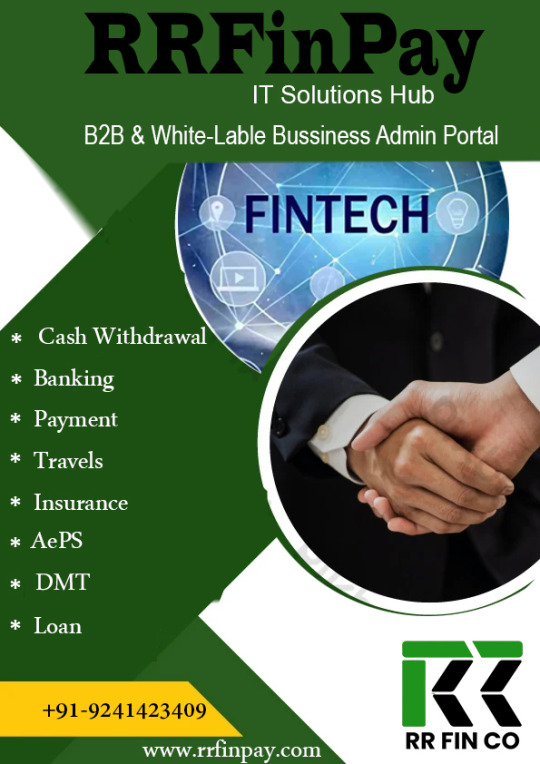
#fintech service#it company#software company#app development company#b2b lead generation#white label agency#white label solution#rrfinpay#rrfinco#dmt software#recharge software#loan service#travel Service#e-government services#dth recharge#mobile recharge#bill payment#adhar pay#payment getaway#Qr/UPI Services#gst Services#Uti pan
2 notes
·
View notes
Text
Crypto trading mobile app
Designing a Crypto Trading Mobile App involves a balance of usability, security, and aesthetic appeal, tailored to meet the needs of a fast-paced, data-driven audience. Below is an overview of key components and considerations to craft a seamless and user-centric experience for crypto traders.
Key Elements of a Crypto Trading Mobile App Design
1. Intuitive Onboarding
First Impressions: The onboarding process should be simple, guiding users smoothly from downloading the app to making their first trade.
Account Creation: Offer multiple sign-up options (email, phone number, Google/Apple login) and include KYC (Know Your Customer) verification seamlessly.
Interactive Tutorials: For new traders, provide interactive walkthroughs to explain key features like trading pairs, order placement, and wallet setup.
2. Dashboard & Home Screen
Clean Layout: Display an overview of the user's portfolio, including current balances, market trends, and quick access to popular trading pairs.
Market Overview: Real-time market data should be clearly visible. Include options for users to view coin performance, historical charts, and news snippets.
Customization: Let users customize their dashboard by adding favorite assets or widgets like price alerts, trading volumes, and news feeds.
3. Trading Interface
Simple vs. Advanced Modes: Provide two versions of the trading interface. A simple mode for beginners with basic buy/sell options, and an advanced mode with tools like limit orders, stop losses, and technical indicators.
Charting Tools: Integrate interactive, real-time charts powered by TradingView or similar APIs, allowing users to analyze market movements with tools like candlestick patterns, RSI, and moving averages.
Order Placement: Streamline the process of placing market, limit, and stop orders. Use clear buttons and a concise form layout to minimize errors.
Real-Time Data: Update market prices, balances, and order statuses in real-time. Include a status bar that shows successful or pending trades.
4. Wallet & Portfolio Management
Asset Overview: Provide an easy-to-read portfolio page where users can view all their holdings, including balances, performance (gains/losses), and allocation percentages.
Multi-Currency Support: Display a comprehensive list of supported cryptocurrencies. Enable users to transfer between wallets, send/receive assets, and generate QR codes for transactions.
Transaction History: Offer a detailed transaction history, including dates, amounts, and transaction IDs for transparency and record-keeping.
5. Security Features
Biometric Authentication: Use fingerprint, facial recognition, or PIN codes for secure logins and transaction confirmations.
Two-Factor Authentication (2FA): Strong security protocols like 2FA with Google Authenticator or SMS verification should be mandatory for withdrawals and sensitive actions.
Push Notifications for Security Alerts: Keep users informed about logins from new devices, suspicious activities, or price movements via push notifications.
6. User-Friendly Navigation
Bottom Navigation Bar: Include key sections like Home, Markets, Wallet, Trade, and Settings. The icons should be simple, recognizable, and easily accessible with one hand.
Search Bar: A prominent search feature to quickly locate specific coins, trading pairs, or help topics.
7. Analytics & Insights
Market Trends: Display comprehensive analytics including top gainers, losers, and market sentiment indicators.
Push Alerts for Price Movements: Offer customizable price alert notifications to help users react quickly to market changes.
Educational Content: Include sections with tips on technical analysis, crypto market basics, or new coin listings.
8. Social and Community Features
Live Chat: Provide a feature for users to chat with customer support or engage with other traders in a community setting.
News Feed: Integrate crypto news from trusted sources to keep users updated with the latest market-moving events.
9. Light and Dark Mode
Themes: Offer both light and dark mode to cater to users who trade at different times of day. The dark mode is especially important for night traders to reduce eye strain.
10. Settings and Customization
Personalization Options: Allow users to choose preferred currencies, set trading limits, and configure alerts based on their personal preferences.
Language and Regional Settings: Provide multilingual support and regional settings for global users.
Visual Design Considerations
Modern, Minimalist Design: A clean, minimal UI is essential for avoiding clutter, especially when dealing with complex data like market trends and charts.
Color Scheme: Use a professional color palette with accents for call-to-action buttons. Green and red are typically used for indicating gains and losses, respectively.
Animations & Micro-interactions: Subtle animations can enhance the experience by providing feedback on button presses or transitions between screens. However, keep these minimal to avoid slowing down performance.
Conclusion
Designing a crypto trading mobile app requires focusing on accessibility, performance, and security. By blending these elements with a modern, intuitive interface and robust features, your app can empower users to navigate the fast-paced world of crypto trading with confidence and ease.
#uxbridge#uxuidesign#ui ux development services#ux design services#ux research#ux tools#ui ux agency#ux#uxinspiration#ui ux development company#crypto#blockchain#defi#ethereum#altcoin#fintech
2 notes
·
View notes
Text
Fintech App Development
Develop secure, scalable, and innovative fintech applications that cater to the financial requirements of today's times. Be it digital wallets or robo-advisors, our fintech app development solutions equip businesses with hassle-free transactions, AI-powered insights, and superior security.
2 notes
·
View notes
Text
Decoding the Theory of FinTech: Unveiling the Future of Finance

In the rapidly evolving landscape of finance, the fusion of technology and financial services has given rise to a groundbreaking concept known as Financial Technology, or FinTech. This marriage of finance and technology has not only revolutionized traditional financial practices but has also paved the way for innovative solutions to address contemporary challenges. FinTech Development Outsourcing serves as a crucial enabler in this journey, facilitating the development and deployment of cutting-edge FinTech solutions. Let's delve into the theory of FinTech and explore its significance in shaping the future of finance.
Understanding the Theory of FinTech:
At its essence, the theory of FinTech revolves around harnessing technological advancements to optimize and enhance various financial activities. From payment processing and lending to investment management and insurance, FinTech encompasses a wide array of technologies and applications aimed at transforming the way financial services are accessed and delivered.
One of the core principles driving the theory of FinTech is the democratization of financial services. By leveraging digital platforms, mobile applications, and innovative payment solutions, FinTech aims to make financial services more accessible, affordable, and inclusive for individuals and businesses worldwide. This democratization extends beyond traditional banking services to encompass a diverse range of financial products and services, including crowdfunding, peer-to-peer lending, digital wallets, and robo-advisors.
Moreover, the theory of FinTech challenges traditional banking models by introducing disruptive innovations that redefine the dynamics of the financial industry. By leveraging technologies such as blockchain, artificial intelligence, big data analytics, and cloud computing, FinTech companies can streamline operations, reduce costs, enhance security, and improve customer experiences. These innovations enable FinTech companies to offer faster, more efficient, and more transparent financial services compared to traditional banking institutions.
The Role of FinTech Development Outsourcing:
FinTech development outsourcing plays a pivotal role in accelerating the pace of innovation and driving the adoption of FinTech solutions across the globe. Outsourcing firms specializing in FinTech bring to the table a wealth of expertise, experience, and resources required to develop and deploy cutting-edge financial technology products. From software development and UI/UX design to quality assurance and cybersecurity, outsourcing firms offer a comprehensive suite of services tailored to the unique needs of FinTech projects.
By partnering with outsourcing firms, FinTech companies can access a global talent pool of skilled developers, engineers, and domain experts who possess the technical know-how and industry insights necessary to bring FinTech ideas to life. Outsourcing development tasks also enables FinTech companies to reduce time-to-market, mitigate risks, and optimize costs, thereby gaining a competitive edge in the fast-paced FinTech landscape.
Conclusion:
In conclusion, the theory of FinTech represents a paradigm shift in the way financial services are conceived, delivered, and experienced. By harnessing the power of technology, FinTech has the potential to democratize access to financial services, drive innovation, and promote financial inclusion on a global scale. FinTech Development Outsourcing plays a vital role in catalyzing this transformation by providing specialized expertise, resources, and support to FinTech ventures. As the FinTech ecosystem continues to evolve, embracing outsourcing services will be essential for staying ahead of the curve and shaping the future of finance.
0 notes
Text
Benefits of Fintech Development Outsourcing
Fintech software development outsourcing is the key of starting your own brand b2b fintech business without having technical background.
Ezulix Software is a leading fintech software development outsourcing service provider company in India.
Here is the list of benefits For Choosing Us as Oursourcing Company:-
Get Bespoke Software Development Company
Latest Fintech Development Technology
Avail of Consulting Service
Post Development Support & Maintainance
Responsibility & Answerability
Best Certified Fintech Software Developers
Organized Fintech Development
More Focus on Fintech Business
Time-Effective Fintech Development
Great Prodict Quality
So If you are planning to start your own brand fintech business and looking for best solution then this is best for you. For more details visit our website or request a freee live demo. https://ezulix.com/
#fintech software#fintech software development#fintech software outsourcing#fintech development outsourcing#fintech software development company
3 notes
·
View notes
Text
Romanian AI Helps Farmers and Institutions Get Better Access to EU Funds - Technology Org
New Post has been published on https://thedigitalinsider.com/romanian-ai-helps-farmers-and-institutions-get-better-access-to-eu-funds-technology-org/
Romanian AI Helps Farmers and Institutions Get Better Access to EU Funds - Technology Org
A Romanian state agency overseeing rural investments has adopted artificial intelligence to aid farmers in accessing European Union funds.
Gardening based on aquaculture technology. Image credit: sasint via Pixabay, free license
The Agency for Financing Rural Investments (AFIR) revealed that it integrated robots from software automation firm UiPath approximately two years ago. These robots have assumed the arduous task of accessing state databases to gather land registry and judicial records required by farmers, entrepreneurs, and state entities applying for EU funding.
George Chirita, director of AFIR, emphasized the role of AI-driven automation was groundbreaking in expediting the most important organizational processes for farmers, thereby enhancing their efficiency. Since the introduction of these robots, AFIR has managed financing requests totaling 5.32 billion euros ($5.75 billion) from over 50,000 beneficiaries, including farmers, businesses, and local institutions.
The implementation of robots has notably saved AFIR staff approximately 784 days’ worth of document searches. Over the past two decades, AFIR has disbursed funds amounting to 21 billion euros.
Despite Romania’s burgeoning status as a technology hub with a highly skilled workforce, the nation continues to lag behind its European counterparts in offering digital public services to citizens and businesses, and in effectively accessing EU development funds. Eurostat data from 2023 indicated that only 28% of Romanians possessed basic digital skills, significantly below the EU average of 54%. Moreover, Romania’s digital public services scored 45, well below the EU average of 84.
UiPath, the Romanian company valued at $13.3 billion following its public listing on the New York Stock Exchange, also provides automation solutions to agricultural agencies in other countries, including Norway and the United States.
Written by Vytautas Valinskas
#000#2023#A.I. & Neural Networks news#ai#aquaculture#artificial#Artificial Intelligence#artificial intelligence (AI)#Authored post#automation#billion#data#databases#development#efficiency#eu#EU funds#european union#Featured technology news#Fintech news#Funding#gardening#intelligence#investments#it#new york#Norway#Other#Robots#Romania
2 notes
·
View notes
Text
Stay away from those people who try to disparage your ambitions. Small minds will always do that, but great minds will give you a feeling that you can become great too.—Mark Twain
#motivational speech#motivational#get motivated#motivation#motivating quotes#motivating myself#motionless in white#motivación#blockchain#fintech#cryptocurreny trading#digitalcurrency#fintech app development company#fintech startup#scsolutions#fintech industry#dimension 20#cats of tumblr#caturday#palestine#mlp#stardew valley#d&d#brigerton#lesibian#le sigh#science#geology#biology#scientists
4 notes
·
View notes
Photo

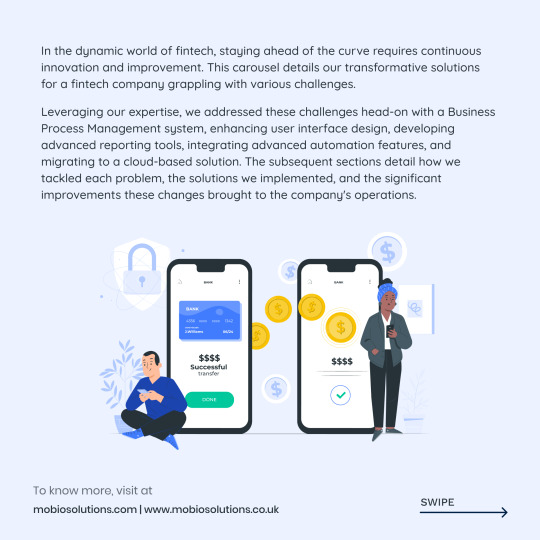
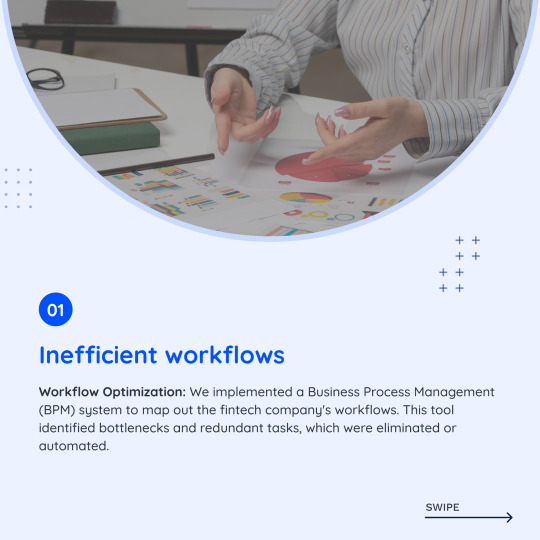
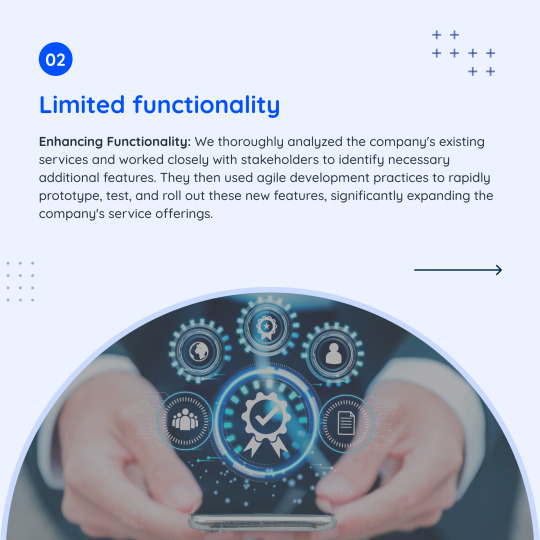
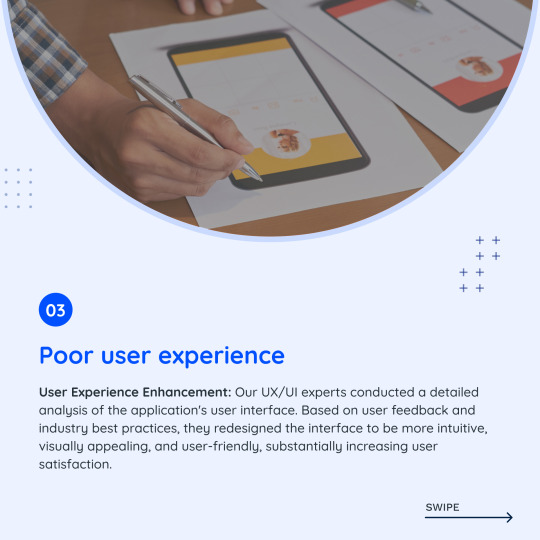
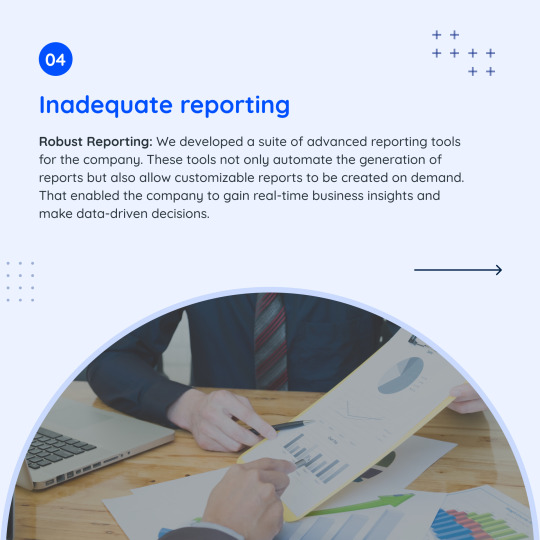
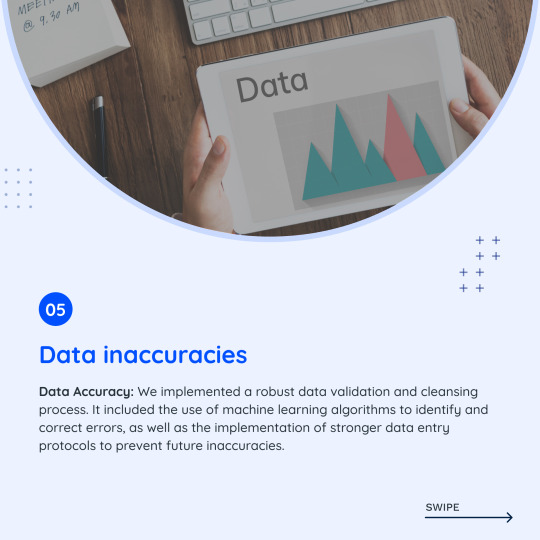
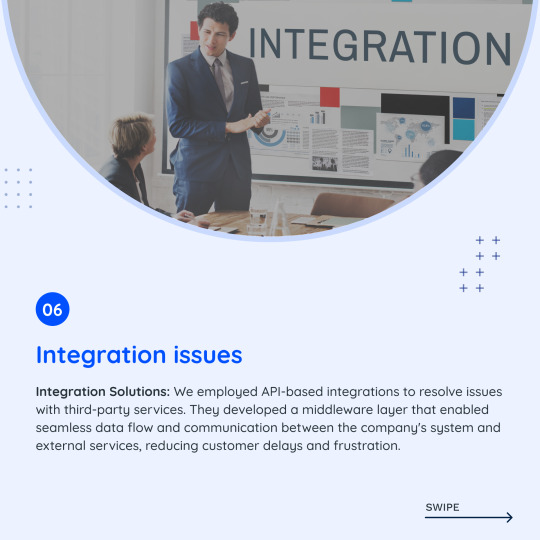
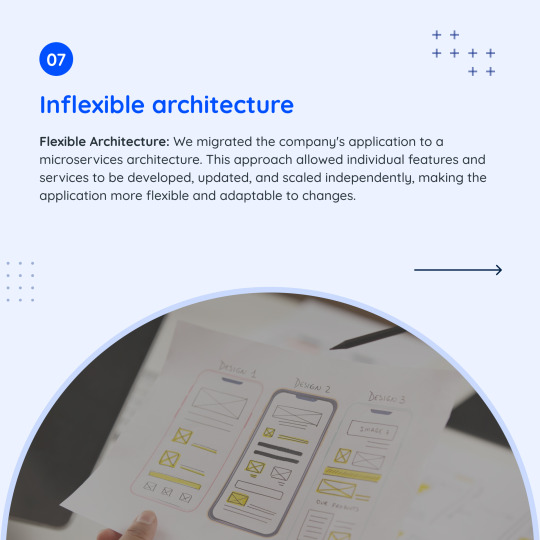

MobioSolutions team of industry experts uses advanced technology and deep domain knowledge to provide smooth, secure, and efficient Fintech solutions. Whether it's integrating robust security protocols, ensuring seamless transaction processes, or driving innovative, user-friendly features, we're on the frontline of transforming financial technology. Join us on this exciting journey and learn how we're paving the way for a better Fintech future.
#finance#fintech#FinServ#financialservices#mobile#web#app#development#fintechindustry#security#technology#future#mobiosolutions#uk
10 notes
·
View notes